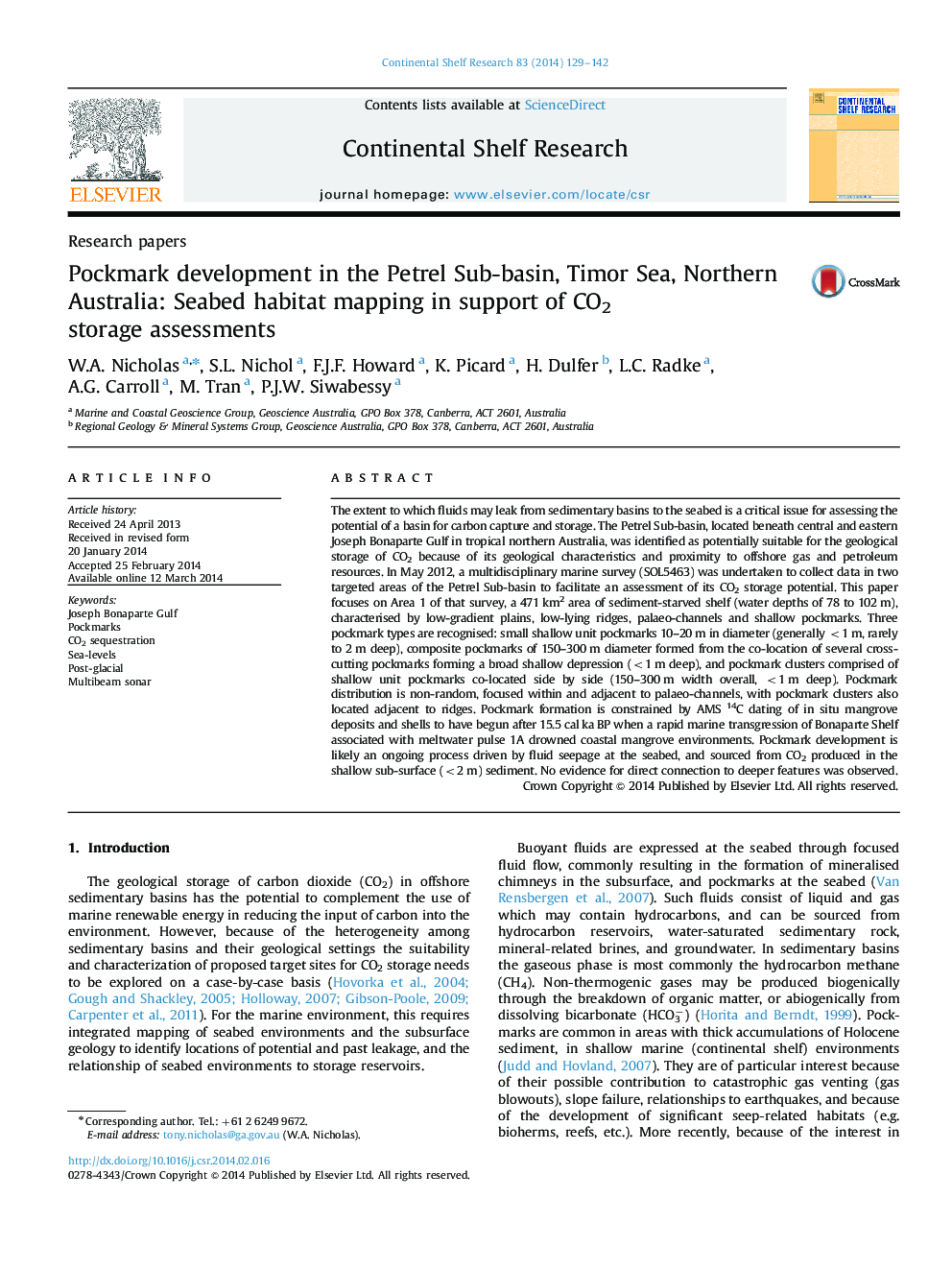| کد مقاله | کد نشریه | سال انتشار | مقاله انگلیسی | نسخه تمام متن |
|---|---|---|---|---|
| 4531838 | 1626129 | 2014 | 14 صفحه PDF | دانلود رایگان |

• The first seabed habitat mapping project for investigating the suitability of marine sedimentary basins for CO2 sequestration in Australia.
• High resolution seabed maps reveal extensive pockmark development in organic rich deposits.
• Evidence for the timing of pockmark development in Joseph Bonaparte Gulf.
• Evidence for post LGM lowstand mangrove environments in tropical northern Australia.
• Rapid transgression of Joseph Bonaparte Gulf during Meltwater Pulse 1A.
The extent to which fluids may leak from sedimentary basins to the seabed is a critical issue for assessing the potential of a basin for carbon capture and storage. The Petrel Sub-basin, located beneath central and eastern Joseph Bonaparte Gulf in tropical northern Australia, was identified as potentially suitable for the geological storage of CO2 because of its geological characteristics and proximity to offshore gas and petroleum resources. In May 2012, a multidisciplinary marine survey (SOL5463) was undertaken to collect data in two targeted areas of the Petrel Sub-basin to facilitate an assessment of its CO2 storage potential. This paper focuses on Area 1 of that survey, a 471 km2 area of sediment-starved shelf (water depths of 78 to 102 m), characterised by low-gradient plains, low-lying ridges, palaeo-channels and shallow pockmarks. Three pockmark types are recognised: small shallow unit pockmarks 10–20 m in diameter (generally <1 m, rarely to 2 m deep), composite pockmarks of 150–300 m diameter formed from the co-location of several cross-cutting pockmarks forming a broad shallow depression (<1 m deep), and pockmark clusters comprised of shallow unit pockmarks co-located side by side (150–300 m width overall, <1 m deep). Pockmark distribution is non-random, focused within and adjacent to palaeo-channels, with pockmark clusters also located adjacent to ridges. Pockmark formation is constrained by AMS 14C dating of in situ mangrove deposits and shells to have begun after 15.5 cal ka BP when a rapid marine transgression of Bonaparte Shelf associated with meltwater pulse 1A drowned coastal mangrove environments. Pockmark development is likely an ongoing process driven by fluid seepage at the seabed, and sourced from CO2 produced in the shallow sub-surface (<2 m) sediment. No evidence for direct connection to deeper features was observed.
Journal: Continental Shelf Research - Volume 83, 15 July 2014, Pages 129–142